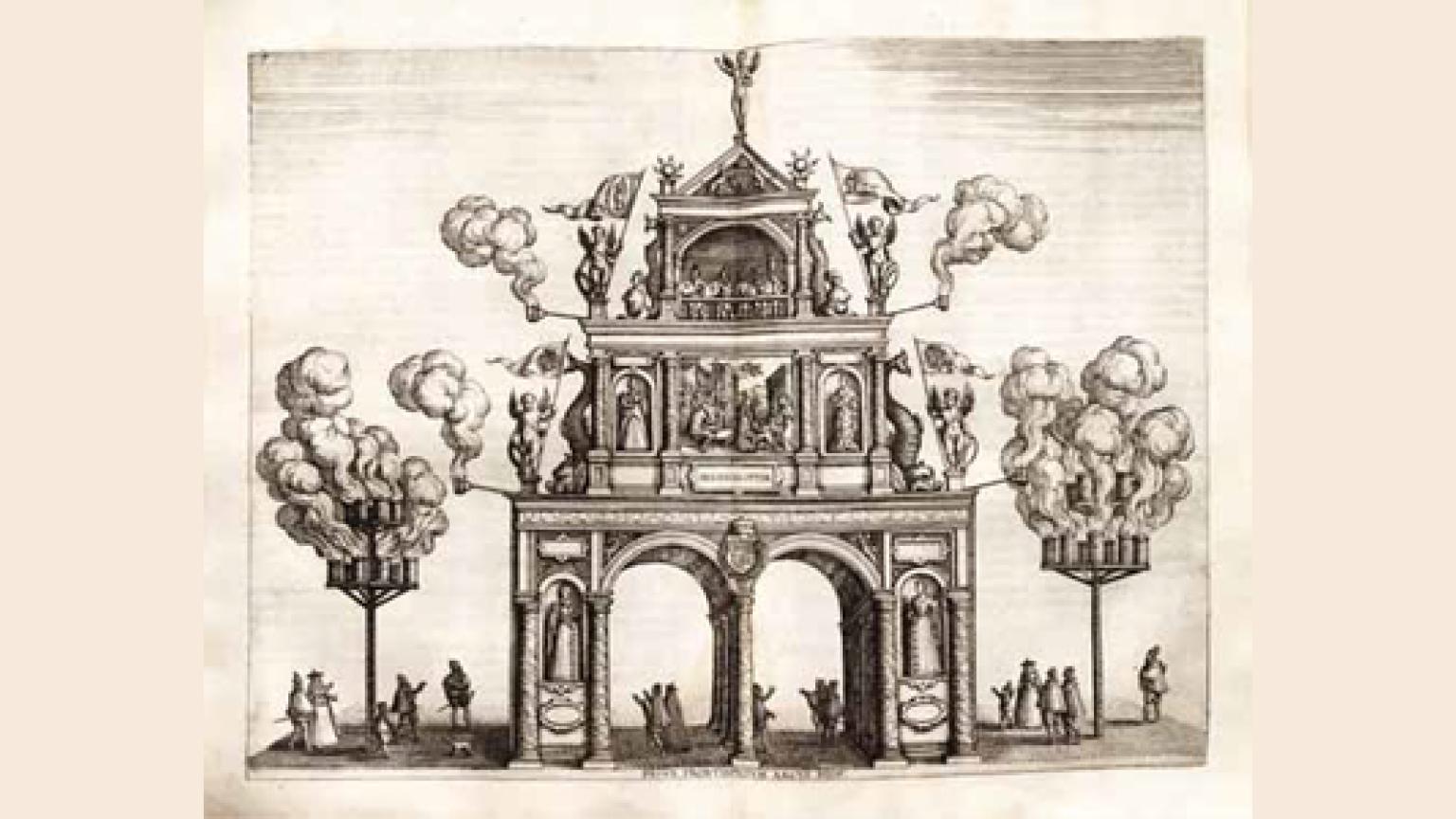Past Exhibition
From the Library: The Fleeting Structures of Early Modern Europe

Details

Overview: For centuries, the world has seen its cities enrobed in festive garb for all manner of honorary events. Today, urban centers find themselves revitalized and beautified to host the Olympic Games or celebrate a national holiday. In the 19th and early 20th century, world's fairs and exhibitions gave cities the opportunity to demonstrate their strengths to the world through public display. In early modern Europe, state visits, coronations, and weddings were among the occasions that provided a city the occasion to stage a lavish production. Artists and architects designed structures and decorations by commission, affording them the chance to experiment with new ideas or encourage city officials to consider new uses of public space.
Today, scholars who are interested in the architectural developments of the past face a distinct obstacle in their research: the fact that many of the structures built for these festivals were not permanent. It was not until the introduction of movable type in the mid-15th century that festival books describing these events began to appear. By the mid-16th century, they had evolved beyond mere textual descriptions to become lavish illustrated volumes. It is through these books that we can approach an understanding of the structures; yet these publications cannot always be taken at face value. Despite titles that purport to deliver a "real and true" account of the event, there are several factors that signal that this may not be the case.
Drawing on examples from the rare book collection of the National Gallery of Art Library, this exhibition seeks to highlight these temporary structures as they are portrayed in print, to note some of the questions involved in their study, and to explore the influence they may have exerted on the permanent architecture around them.
Brochure: From the Library: The Fleeting Structures of Early Modern Europe by Yuri Long. Washington, D.C.: National Gallery of Art, 2012.




